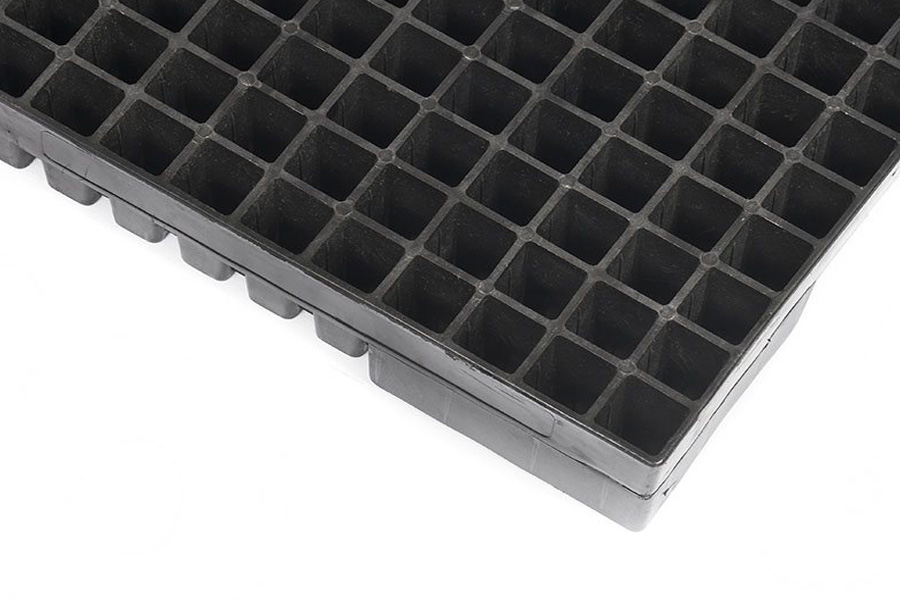Autoflowers
There are a few factors to consider when choosing a tray size for autoflowers, including available greenhouse space, crew size, and transplant timing flexibility.
- Available greenhouse space: Make sure you have enough space to fit all of the trays in the greenhouse. 128 cell trays fit substantially more plants into given space than 72s, for example.
- Crew size: Make sure you have enough people to plant and water all of the seedlings in a timely manner.
- Transplant timing flexibility: If you need to transplant the seedlings quickly, you’ll need to use a smaller tray size.
We recommend using trays that range from 72 to 128 cells. These trays are more space-efficient than smaller trays, and they allow the seedlings to grow more roots before transplanting.
Photoperiod
There’s a difference in sizing trays when it comes to autoflower vs photoperiod. For photoperiod plants, we prefer using larger cell trays. These plants can tolerate being rootbound for longer periods of time than autoflowers, and they are more resilient to transplanting shock.
Seedlings can be up-potted into larger containers depending on the scale of your operation, weather conditions, field conditions, and availability of labor. However, anything larger than a seedling tray cannot be mechanically transplanted.
For larger operations, it is not economical to up-pot seedlings. However, for smaller operations, up-potting can be beneficial. We recommend up-potting seedlings into 3- or 4-inch pots to give them a head start before transplanting.
The tray size you choose will depend on the specific factors of your operation. However, we recommend using larger tray sizes for photoperiod plants and smaller tray sizes for autoflowers.
